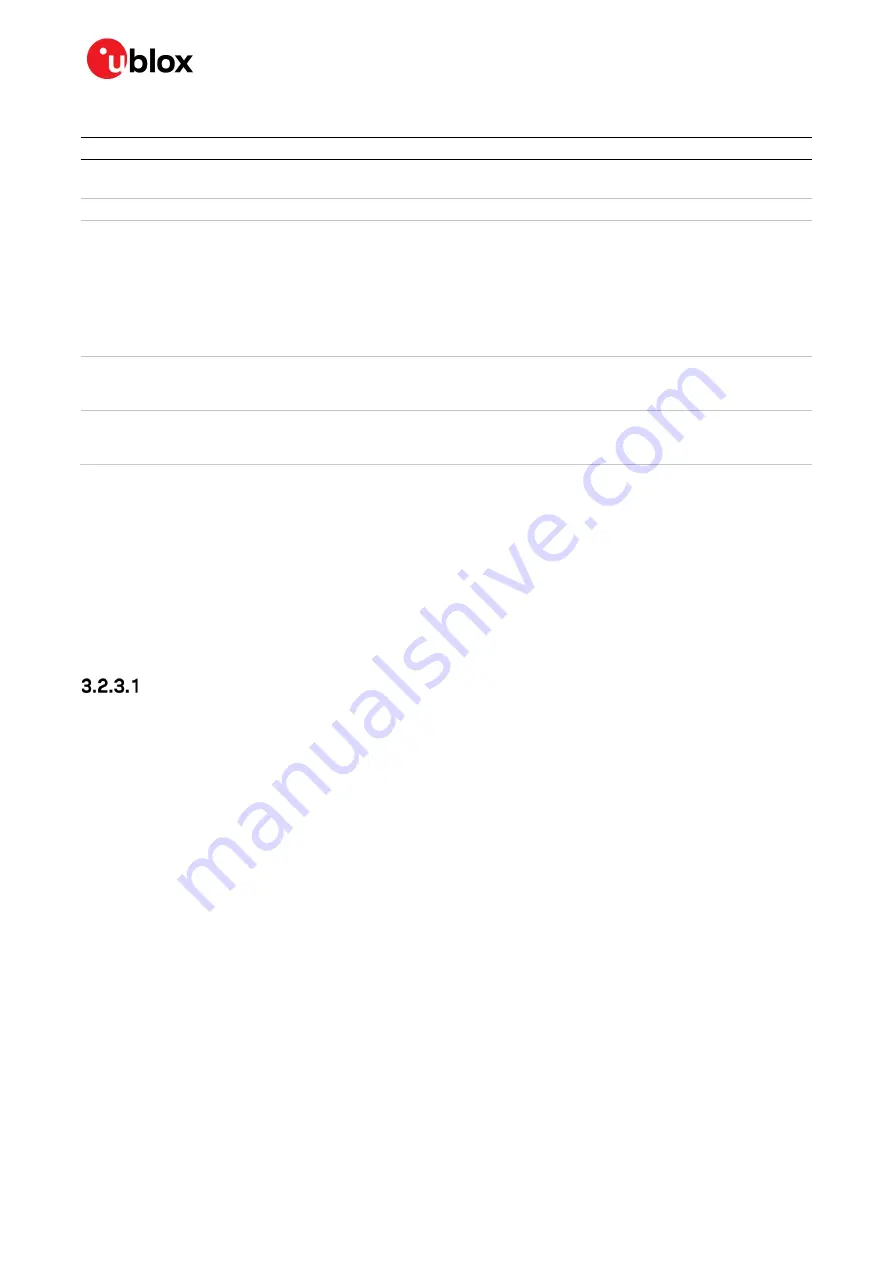
ANNA-B112 - System integration manual
UBX-18009821 - R09
Design-in
Page 41 of 66
C1-Public
Table 13 summarizes the requirements for the antenna RF interface.
Item
Requirements
Remarks
Impedance
50
Ω
nominal characteristic impedance The impedance of the antenna RF connection must match the
50
Ω
impedance of the ANT pin.
Frequency Range 2400 - 2500 MHz
Bluetooth low energy.
Return Loss
S
11
< -10 dB (VSWR < 2:1) recommended
S
11
< -6 dB (VSWR < 3:1) acceptable
The Return loss or the S
11
, as the VSWR, refers to the amount
of reflected power, measuring how well the primary antenna
RF connection matches the 50
Ω
characteristic impedance of
the ANT pin.
The impedance of the antenna termination must match as
much as possible the 50
Ω
nominal impedance of the ANT pin
over the operating frequency range thus, maximizing the
amount of the power transferred to the antenna.
Efficiency
> -1.5 dB ( > 70% ) recommended
> -3.0 dB ( > 50% ) acceptable
The radiation efficiency is the ratio of the radiated power to
the power delivered to the antenna input; the efficiency is a
measure of how well an antenna receives or transmits.
Maximum Gain
Refer to Section 5
The maximum antenna gain must not exceed the value
specified in type approval documentation to comply with the
radiation exposure limits specified by regulatory agencies.
Table 13: Summary of antenna interface requirements for ANNA-B112
In both the cases, while selecting external or internal antennas, the following recommendations
should be observed:
•
Select antennas that provide optimal return loss (or VSWR) figure over all the operating
frequencies.
•
Select antennas that provide optimal efficiency figure over all the operating frequencies.
•
Select antennas that provide appropriate gain figure (that is, combined antenna directivity and
efficiency figure) so that the electromagnetic field radiation intensity does not exceed the
regulatory limits specified in some countries (for example, by FCC in the United States).
RF transmission line design
RF transmission lines, such as the ones from the antenna output up to the related antenna connector
or up to the related internal antenna pad, must be designed so that the characteristic impedance is
as close as possible to 50
Ω
. Figure 26 shows the design options and the main parameters to be
considered when implementing a transmission line on a PCB:
•
Micro strip: track coupled to a single ground plane, separated by dielectric material.
•
Coplanar micro strip: track coupled to the ground plane and side conductors, which is separated by
dielectric material.
•
Strip line: track sandwiched between two parallel ground planes, separated by dielectric material.
















































